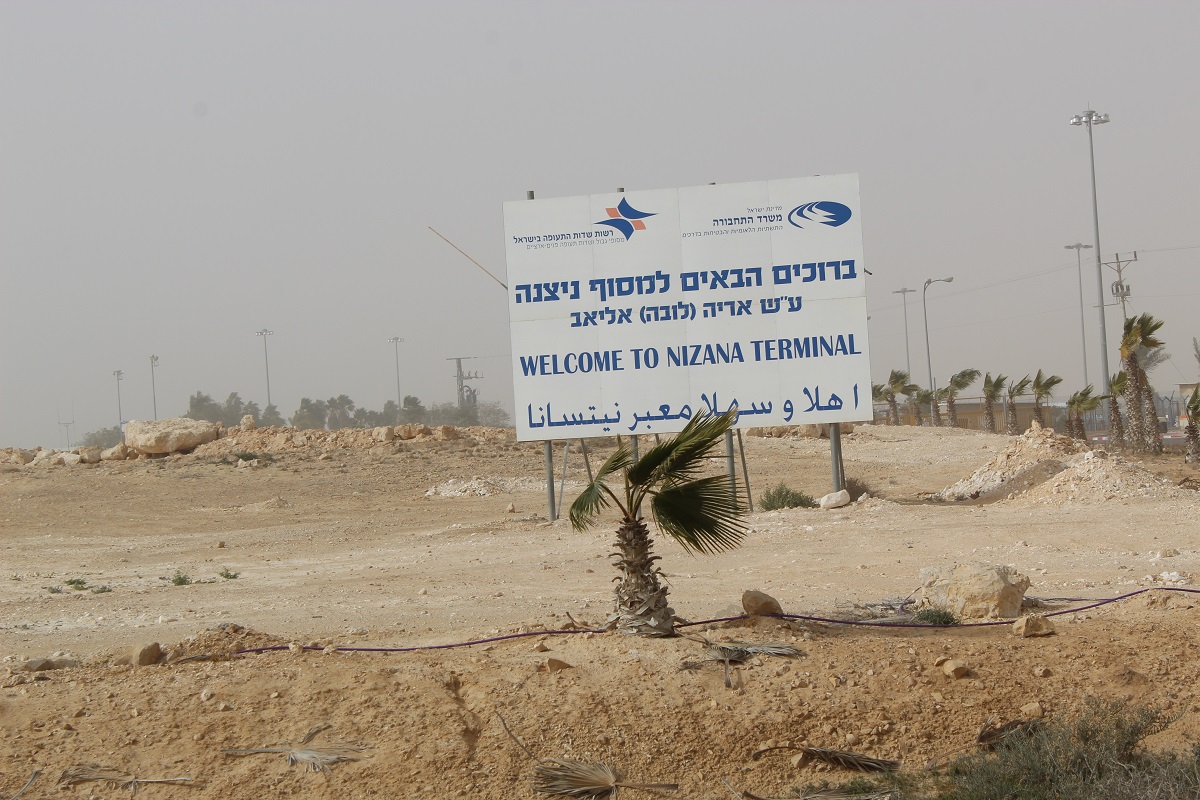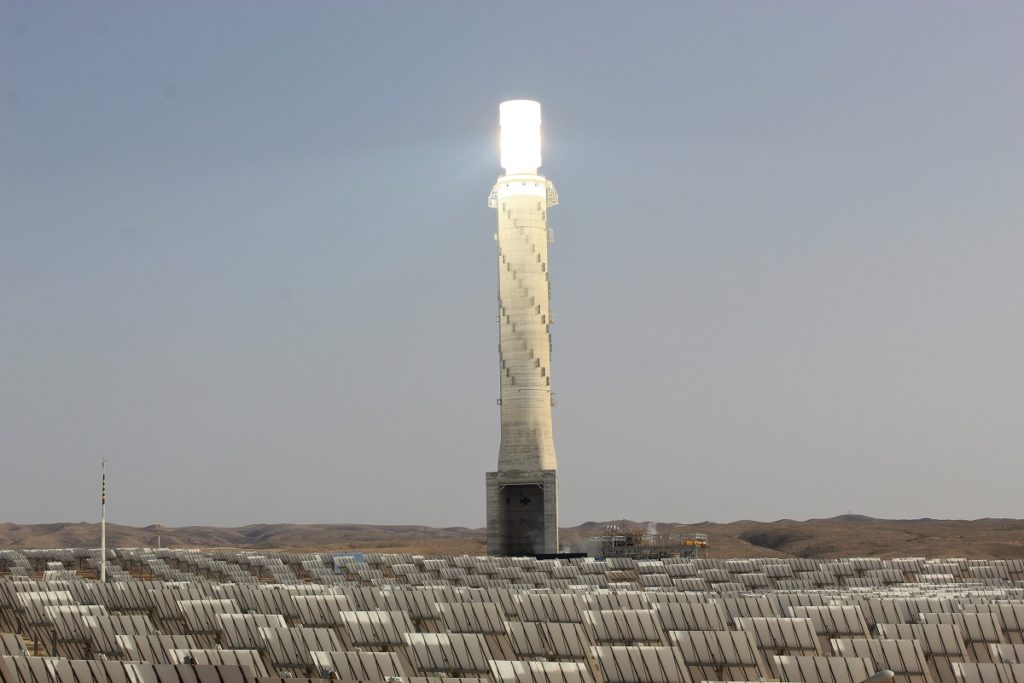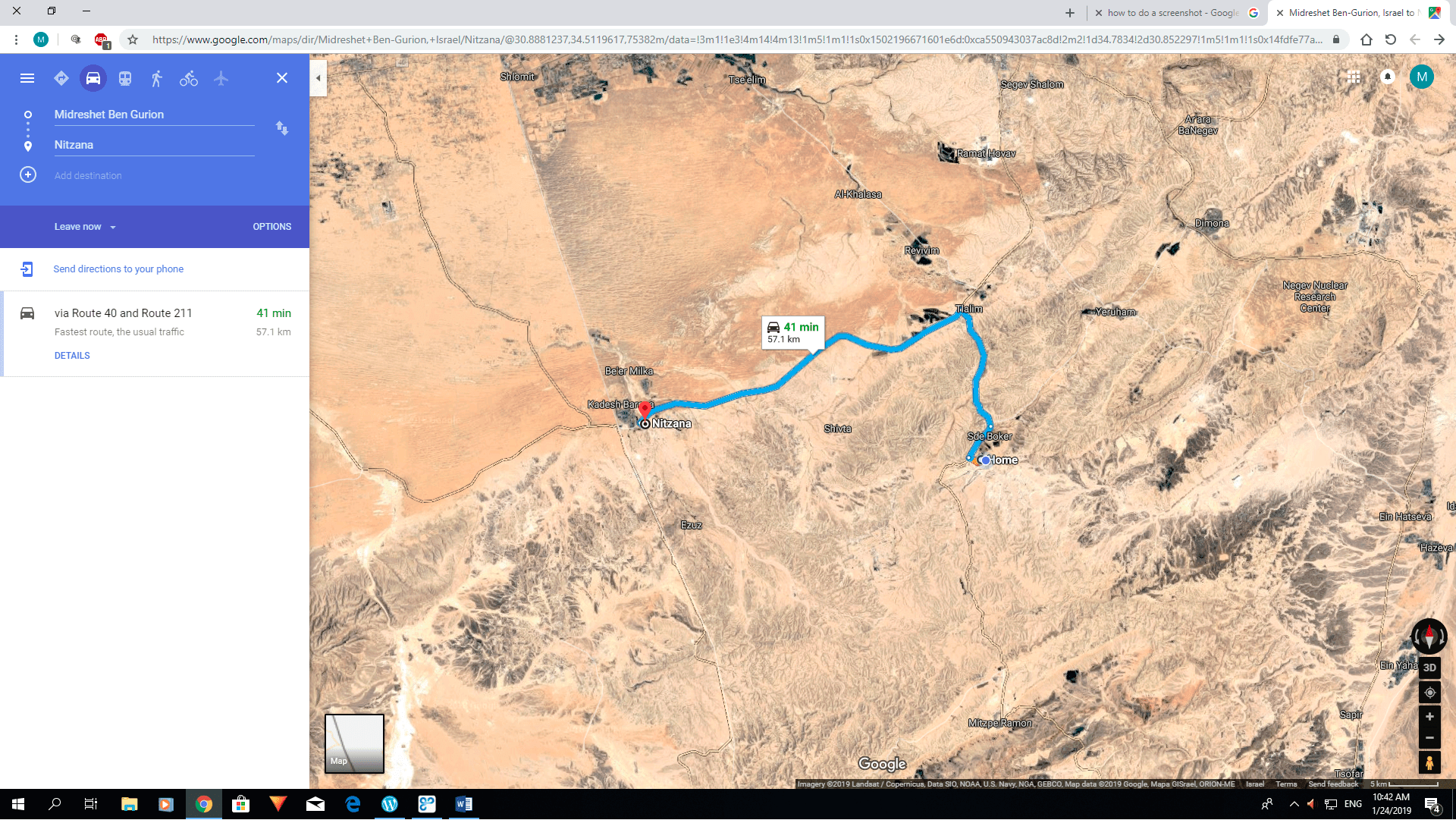To get to the Nitzana Salient, take road 40 going North. At Tlalim Junction, turns left to road 211. It shoots like an arrow straight at Egyptian Sinai and comes to a dead end.
The road and its environs go by the name Pit’hat Nitzana. 40 years ago there was nothing here. It was an empty desert with a few obscure ruins and an IDF artillery base at Shivta. The IDF used the ruins for target practice. The only Israelis who knew this area were those who had served at this base and their memories of it are not happy. In 1982 with the arrival of peace with Egypt, a border crossing was opened in the expectation that 211 would become a six lane highway to Cairo. But that hasn’t worked out, in fact now the crossing is effectively closed.

Today, road 211 still passes through an endless desert landscape but things are happening both large and small, most of them not visible from the road and this is what I am going to tell you about. Three things have changed: The first is the fact that today, the border is sealed with a twenty foot fence so that people feel it is safe to live here now. The second is that the government has offered incentives to farmers to set up businesses here, and it has worked. The third is that the state is now trying to rebrand Nitzana as a tourist destination. That is going to be a stretch, it might become that in twenty or fifty years but that is not the case today. Nevertheless Marion and I love this forlorn stretch and we make the 50 km drive along road 211 whenever we can. Israel’s last wilderness.
I have a special interest in the Nitzana salient, I’m English and therefore a railway enthusiast. In 1915 the Turkish military set out to build a narrow guage railway from Beer Sheva to the Suez Canal. They were operating 100 km of track before it was destroyed by the Australians in 1917. The remains of this fiasco are scattered along the road.
Here are a few other points of interest along the road:
Ashalim Solar and the MoP.
Leaving Tlalim junction on 211 you first spot the solar tower on your left, you can’t miss it. It’s brand new. It is a concrete tower 200 meters high and atop the tower is a 50 meter carbon steel container. It is surrounded by a field of 5000 mirrors that track the sun and focus light on the container turning it white hot. Water is pumped in, steam is pumped out. In the middle of a summer day drivers approaching along route 40 complain that they are blinded by this object. To me the tower looks like a Biblical illustration by Gustave Doré. If Ramses II could have had one of these he wouldn’t have bothered with his pyramid, because this brilliant torch in the sky says it all, in certain conditions it looks as if the light comes from above! Am I getting over-excited? You can judge for yourself.

On the other side of the road is the MoP. MoP translated means R&D. This is a government-funded body to assist the farmers in the region. It consists of scientists and administrators who are there to provide information and advice to enable the farmers to increase yield and quality and to develop new products and hybrids, they work together hand in glove. Tours of both facilities can be organized by prior arrangement.
About 10 km after Ashalim on your left, you will see a plain sign ‘SHIVTA’. It’s a nine km drive along a straight narrow road, a little-visited treasure. Two thousand years ago the Nabateans built a chain of fortified cities from Yemen to Gaza to enable them to conduct their continental transportation business. There are six of them in Israel and my favourite is Shivta. It has been excavated twice, once in the 1930’s and once last year and now it seems that some major work is being planned. We haven’t been consulted so I am going to guess that it will be a water park.
Hiking, biking, jeeping
On the other side of 211 and a little after Shivta, dunes ripple all the way to the Egyptian border. The Sahara it is not, but on a cooler day it could be fun if you have brought the kids. In fact you can go sand-surfing or cycling on dune bikes.
Nahal Lavan starts right in front of the turn-off for Shivta and goes all the way to the Egyptian border (36 km between the dunes). You can explore it by jeep or just in portions.
At Nitzana, turn left in the direction of Ezuz and you’ll find the biggest concentration of short hikes in the area around the minor byzantine ruins of Tel Nizzana. The Hillocks (In Hebrew it is called hamukim, as in body curves, a curious lunar-like scenery). And finally the Peace Trail which runs for three km. Essentially an art installation with a political sentiment. Every post has the word ‘peace’ in a different language; intended to celebrate the six-lane highway.
Eateries
Café Ezuz is 60 km from our guesthouse, we think nothing of going there for a meal, it is that good. HaMasa’it [The Truck] is at the Nitzana turn-off, ten minutes before you get to Café Ezuz. Surprisingly, there are other eateries in this remote area but they all keep idiosyncratic opening hours so call first. Alternatively stock up for a picnic at the Midrasha: bread and cake from our local bakery Lasha, general supplies from the small shop in the gaz station that has recently opened on road 211 (it stocks fresh products from the local growers) and goat cheese from Kornmehl farm. There are several little orchards in the area which make for a nice picnic spot.
The local communities.
There are currently 1,000 people living in the Nitzana Salient and they are spread over five (primarily) agricultural villages: K’mahin, Beer Milka, Kadesh Barnea, Nitzana and Ezuz. They are all remote, isolated and fenced-off. The families living in them are mainly Tel Aviv expats, many of them hi-tech refugees, their stories are inspiring to me. Beer Milka, standing atop a dune, is worth a visit. In all these villages some local products (ceramics, organic cosmetics, medicinal herbs and teas, honey, even strawberries) can be purchased but only by prior arrangement.
Of the four communities Kadesh Barnea is the most remarkable. It is the only Israeli village that actually sits on the 250 km border with Egypt. This border has been quiet for more than 40 years, but at the time of writing there is a bloody insurrection in Sinai which threatens to spill over into Israel and for this reason, there is a permanent military detachment in the village. With ISIS potentially 300 meters from their houses, these farming families are getting on with their lives, producing technological wonders with their fruit and veg, herbs and medicinal plants, and bringing up their children. This, not Tel Aviv, this is Israel.


